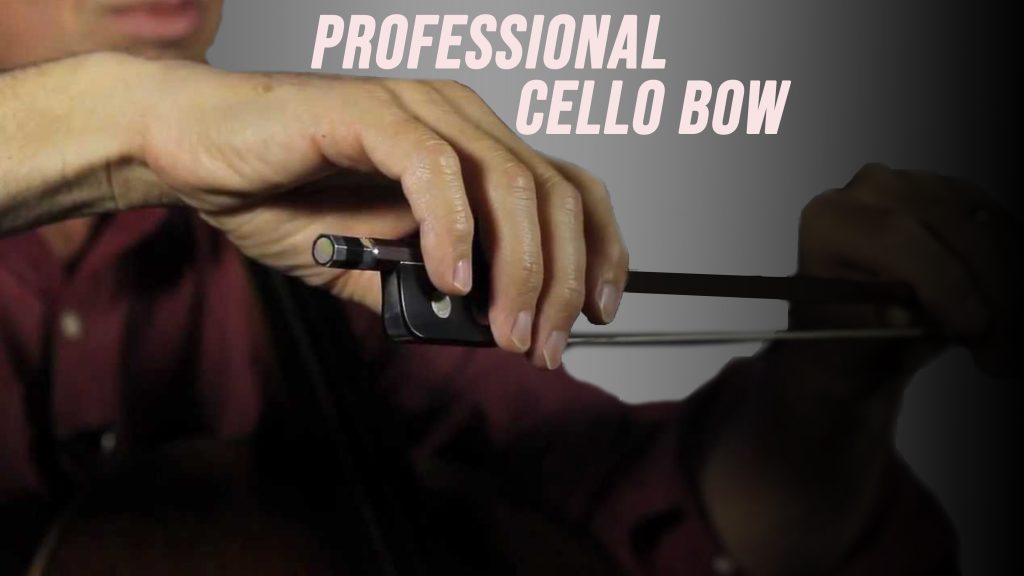If you are looking for a professional cello bow, you might be overwhelmed by the variety of options available on the market. There are different types of materials, shapes, weights, and prices to consider. How do you know which one is the best for you?
In this blog post, we will give you some tips on how to choose a professional cello bow that suits your needs and preferences.
Factors to Consider When Choosing a Professional Cello Bow
There are several factors that you should consider when choosing a professional cello bow, such as:
- Material: The material of the cello bow affects its sound quality, durability, and price. The most common materials are wood, carbon fiber, and fiberglass. Wood bows are traditional and offer a warm and rich sound, but they can be expensive and sensitive to humidity and temperature changes. Carbon fiber bows are modern and offer a clear and powerful sound, but they can be stiff and lack character. Fiberglass bows are cheap and sturdy, but they have a dull and brittle sound.
- Shape: The shape of the cello bow affects its balance, flexibility, and weight distribution. The most common shapes are round and octagonal. Round bows are more flexible and responsive, but they can be less stable and precise. Octagonal bows are more rigid and stable, but they can be less expressive and comfortable.
- Weight: The weight of the cello bow affects its maneuverability, control, and tone production. The ideal weight for a cello bow is between 75 and 85 grams. A lighter bow can be easier to handle and produce a softer tone, but it can also be less powerful and consistent. A heavier bow can be more powerful and consistent, but it can also be harder to handle and produce a harsher tone.
- Balance: The balance of the cello bow affects its feel, comfort, and playability. The ideal balance point for a cello bow is between 18.5 and 19.5 cm from the tip of the stick. A well-balanced bow can feel natural and comfortable in your hand, while an unbalanced bow can feel awkward and uncomfortable.
List of Products
Here are some examples of professional cello bows that you can find online:
- Strad Cello Bow Model 756: This is a high-quality carbon fiber bow that features a traditional ebony frog with nickel-silver fittings, genuine Mongolian horsehair, and a leather grip. It has a powerful and dynamic sound that can suit any playing style.
- Codabow Diamond GX: This is a premium carbon fiber bow that features a Kevlar acoustic core, an ebony frog with goldfish eye inlay, sterling silver winding, lizard leather grip, and silver medal horsehair. It has a smooth and elegant sound that can enhance any musical genre.
- Holstein Pernambuco Cello Bow: This is a classic wood bow that features a Pernambuco stick with an octagonal shape, an ebony frog with Parisian eye inlay, nickel-silver winding, leather grip, and Mongolian horsehair. It has a warm and rich sound that can bring out the best of your cello.
Conclusion
Choosing a professional bow is a personal decision that depends on several factors, such as your skill level, budget, purpose, and preference. There is no one-size-fits-all answer to what makes the best bow for you. However, some general guidelines can help you narrow down your options and find the right fit. First, you should consider the type of bow you want to use: recurve, compound, or traditional. Each type has its own advantages and disadvantages, depending on your shooting style and goals. Second, you should look for a bow that matches your draw length and weight, as well as your eye dominance and handedness. A bow that is too long or too heavy for you will affect your accuracy and comfort. Third, you should test different bows before making a purchase, if possible. This will allow you to compare how they feel and perform in your hands. You can also ask for advice from experienced archers or shop staff to help you make an informed choice. Finally, you should also consider the accessories and maintenance that come with owning a bow, such as arrows, sights, rests, quivers, cases, and strings. These can add to the cost and complexity of your bow setup, but also enhance your shooting experience and performance. By following these steps, you can find a professional bow that suits your needs and preferences.



